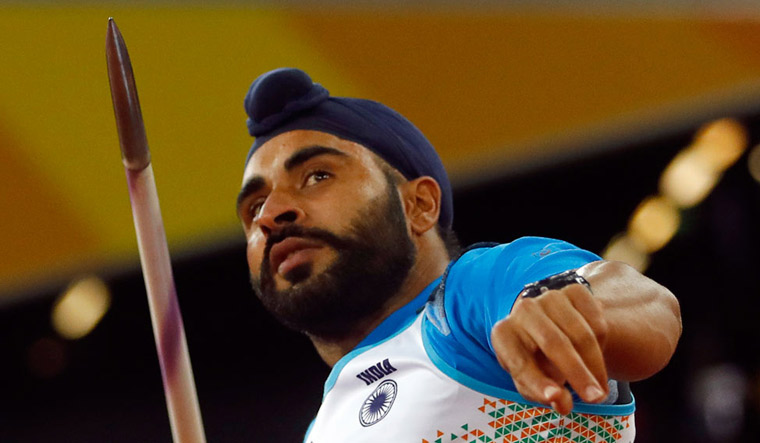The dramatic rise of javelin thrower Davinder Singh Kang and his equally rapid fall is a prime example of what is wrong with athletics at the highest level. At a time when all eyes were on Neeraj Chopra and his development into a world-class, medal-winning athlete, Kang’s arrival on the scene had only added to the medal hopes. The desperation to succeed, with massive windfall in terms of rewards, has led many an athlete to push their luck. Kang’s is one such story.
That he was one of the top Indian athletes in World Anti Doping Agency’s testing pool makes his case more serious. Kang’s rise to the top has been ridden with controversy and question marks.
Speaking to THE WEEK, C.K. Valson, secretary, Athletics Federation of India, admitted that Kang’s provisional suspension by IAAF after he returned positive for banned steroid, was a huge setback for Indian athletics. “Definitely it’s a setback. We were banking on him and Neeraj Chopra for medals in Commonwealth Games and Asian Games.”
His samples were collected by Athletes Integrity Unit, the new anti-doping body founded by the IAAF. He is one of five Indian athletes in the IAAF’s Registered Testing Pool under the “whereabouts clause” of the WADA. He was tested four days before he was getting ready to compete at the Indian Grand Prix event in Patiala. If his B sample, too, returns positive, then he could face a career-threatening ban of four years.
But, this is not the 29-year-old’s first brush with anti-doping authorities.
Last year, in May, he was tested positive for marijuana in a sample collected by the National Anti Doping Agency during the Indian Grand Prix in New Delhi. But, he escaped sanction as marijuana is in the specified list of the WADA and does not attract automatic suspension.
An army man, Kang first became a member of the national camp in 2014. His personal coach was Kashinath. He took part in the CWG 2014 but much to disappointment of the national coaches, he could not throw more than 70-73m. In 2015, he left the national camp to train “outside”. Now, training individually away from the national camps has been a major issue with the national coaches and the AFI, as they claim it is not possible to monitor athletes’ progress.
He 'reappeared' on the national scene post 2016 Rio Olympics. Till then, he was not part of the national camp for almost two years. “It was in 2017, at the Federation Cup in Patiala, that he threw 83m for the first time. He went on to win a bronze medal at the Asian Championships in 2017,” said P. Radhakrishnan Nair, deputy chief national coach, recounting Kang’s appearances and long disappearances from national camp.
He then went on to make history by becoming first Indian to qualify for the finals of the javelin event in the IAAF World Championships in London 2017 with best throw of 84.57m, where he finished 12th. He finished with a best throw of 80.02m in three attempts, citing injury.
There is competition between Kang and Chopra—the world junior champion who had a disappointing run in the World Championships in London, failing to qualify for the finals.
However, Kang was not included in the TOPS, which shortlists potential Olympics medallists for funding for training and competitions. Despondent, he threatened to move to Italy but cited paucity of funds and existing debts for not doing so.
The latest doping controversy has not done him any good. His only hope is that his B sample returns negative. Or else, all his hopes of making it to the CWG or the Asian Games will be over. And not to forget the Tokyo 2020 Olympics.


